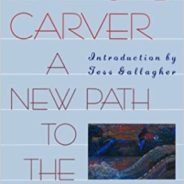Posted by Diane Morrow on November 27, 2006 in Featured Pieces, Healing Poetry
[I am very pleased to introduce this poem submitted by Danielle Crawford, a young woman at Fairhaven College in western Washington state. She began writing this poem while in her first “official” poetry class, four months ago, and she is now, she tells me, passionately pursuing a double major in creative writing and fine art.] Four Chambers for Tyler David Tandeski In memoriam [October 1, 1999] I. It stinks like cotton swabs turned cold beside Mother’s under-ripe belly. Six months have passed. She sits, waits: hunched, hurt on that inhospitable bed. I can’t tell her this, but she’s aged a decade in a day. Never looked so frail: a daisy, withered by the worst of winters. The October sky— Mom’s crying again, laying above peppered linoleum, under so many lights there’s nowhere left to hide. She’s naked, barren beneath the gown. I try to resist, but join her, weep. * The doctor’s eyes are dull with mock concern. I, twelve, confused, want to escape. In their crisply clean uniforms— uniform sterility— they stare, then speak: The human heart has four chambers… How were we to know God gave you only two? * Years of wait and worry plagued my parents. Mom’s stiff as the starchy parchment paper she’s now lying on. Emotions repressed, her words are strangled: It’s done. II. Did we make the right choice? After the initial miracle of you, I guess we believed in invincibility. An age-old wish, the desire to rewind. Would it have been selfish—? We thought of the steps you never took. We kissed the ground you never set foot upon. Since you’ve been gone, we’ve lost our footing, our solid ground. I try to picture what you’d be like now. I’ve dressed your name up in costumes, cloaked your memory with denial, anguish, rage… anything I could muster, paralyzed. I don’t wish to remember you this way. I’m back where I began: without a clue. The cotton, the clothing, that cold room, my memory, too— it’s all too white. I can’t help but wonder if, taken, you took color from our lives. ‘99. Now seven more. You would be eight, Tyler, had you survived half a heart and Down Syndrome. I’m greedy; I want you next to me. You still are my brother. I think of you, whose footprint—only an inch!— left a lasting imprint. The human heart has four chambers… Your heart was stronger than mine for letting you go. We need your malformed heart to mend our...
read more


